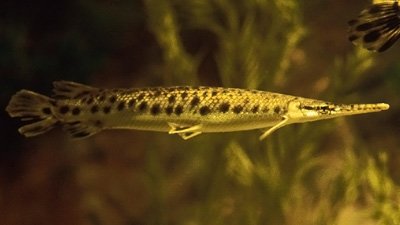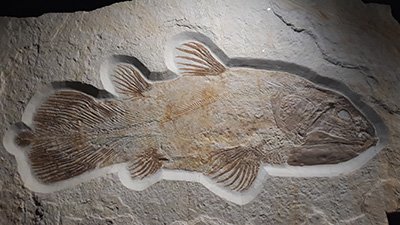
Living Fossil Found In Grape-Sized Cell
A grape-sized cell inching along the ocean floor may be one of the world’s “oldest” living fossils.
News Source
- BBC News: “‘Grape’ Is Key to Fossil Puzzle”
It sounds like an alien character from a pulpy science fiction story: a mud-covered single-celled ball the size of a grape that lives on the ocean floor and was found off the Bahamas.
Researchers led by the University of Texas’s Misha Matz describe the strange creature, named Gromia sphaerica, in an article soon to be published in the journal Current Biology. Approximately an inch (2.5 cm) in diameter, the creature uses tiny leg-like structures to move along slowly, while numerous openings act as mouths and waste ports. How slowly? Perhaps only a few centimeters a month!
But it’s the movement of these creatures that is of the most interest to researchers. Because the creatures live on seabeds where the current is almost nonexistent, their tracks aren’t washed away. These tracks look just like tracks found in the fossil record “up to 1.8 billion years ago.”
Formerly, such tracks were thought to have been the work of multi-celled organisms, because they believed that the key to the tracks was bilateral symmetry. BBC News reports, “Fossil experts believe bilateral symmetry is what gave the organism the ability to make the tracks, with the impressions being produced when the organism moved its weight from one side to another.” However, it adds that bilateral symmetry wasn’t thought to have evolved until 542 million years ago, during the Cambrian explosion. NBC News reports,
Charles Darwin first noticed the Cambrian Explosion and thought it was an artifact of a poorly preserved fossil record. The precambrian trace fossils were left by multicellular animals, he reasoned, so there must be some gap in fossils between the nearly empty Precambrian and the teeming world that quickly followed. But if the first traces were instead made by G. sphaerica, it would mean the Explosion was real; it must have been a diversification of life on a scale never before seen.1
According to Matz, “It wasn’t a gradual development of complexity. . . Instead these things suddenly seemed to burst out of a magic box.”2 Need we elaborate?
“[G. sphaerica] may be the ultimate living fossils of the macroscopic world,” adds Matz, and he’s right: if these creatures were over a billion years old, no other living fossil could compare. Even though they are far younger than that—presumably from Day 5 of Creation Week, when God filled the water with creatures—they nonetheless attest that the fossil record wasn’t formed by extremely ancient creatures, but by some plants and animals we still see today. And, while this may explain how such tracks could have been made so “early” (assuming, of course the ancient age of the fossil layers, which we rebut in Get Answers: Geology), scientists are nonetheless confronted with the Cambrian explosion, described in this article as “still one of the biggest questions in animal evolution.”
Further Reading
- Does Radiometric Dating Prove the Earth Is Old?
- The Origin of Life
- The Origin of Invertebrates
- 3.3 Invertebrates: Animals Without Backbones
For More Information: Get Answers
Remember, if you see a news story that might merit some attention, let us know about it! (Note: if the story originates from the Associated Press, FOX News, MSNBC, the New York Times, or another major national media outlet, we will most likely have already heard about it.) And thanks to all of our readers who have submitted great news tips to us. If you didn’t catch all the latest News to Know, why not take a look to see what you’ve missed?
(Please note that links will take you directly to the source. Answers in Genesis is not responsible for content on the websites to which we refer. For more information, please see our Privacy Policy.)
Footnotes
- Michael Reilly, “Single-Celled Giant Upends Early Evolution,” NBC News, November 20, 2008, http://www.nbcnews.com/id/27827279/ns/technology_and_science-science/t/single-celled-giant-upends-early-evolution/.
- Ibid.
Recommended Resources

Answers in Genesis is an apologetics ministry, dedicated to helping Christians defend their faith and proclaim the good news of Jesus Christ.
- Customer Service 800.778.3390
- Available Monday–Friday | 9 AM–5 PM ET
- © 2026 Answers in Genesis






